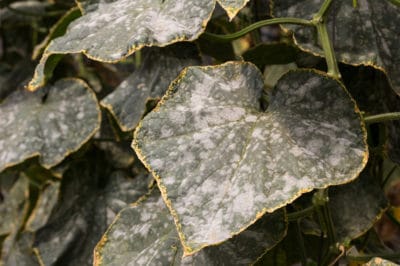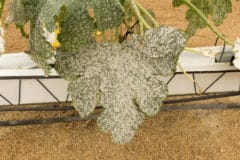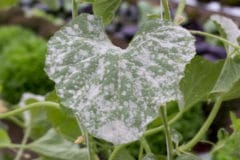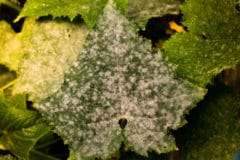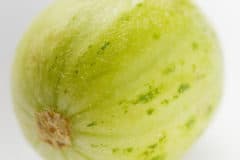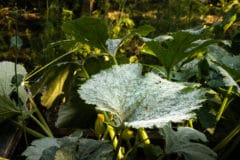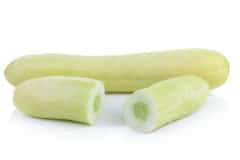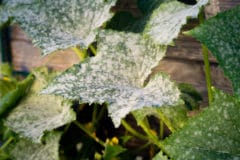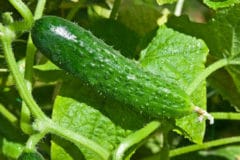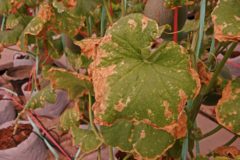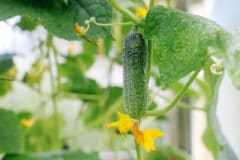What Causes Powdery Mildew
Powdery mildew surfaces when fungal spores attack your cucumbers. The fungi that produce the spores overwinter in plant debris and become active in the spring. Wind, splashing water, pests and even garden tools can transport powdery mildew spores from the soil to your cucumbers.
Mildew-Triggering Conditions
Powdery mildew loves damp, humid conditions, temperatures between 68 and 81° F (20 and 27.2° C) and shade. It’s most likely to find them on a cucumber vine’s lower leaves, where sunlight and air circulation are limited and soil moisture accumulates. Prolonged exposure to full sun and temperatures above 90°F kill the disease.
Treating an Outbreak
At the first sign of powdery mildew on your cucumbers, take these steps:
- Prune and destroy all infected leaves and branches.
- Rinse your pruning tools in rubbing alcohol between cuts so they don’t spread the spores.
- Prune enough healthy branches that sunlight and air reach all the remaining leaves.
- Remove all plant debris from around the cukes. It could harbor powdery mildew spores and reinfect the plants with the next wind or rain.
- If possible, begin watering your cukes from beneath with a soaker hose or drip system that keeps the stems and leaves dry.
Powdery Mildew Prevention
When it comes to cukes and powdery mildew, prevention is worth a thousand cures. The best strategy is to plant vines known to be mildew resistant. Popular cultivars include:
- ‘Marketmore 76,’ a home garden staple. Its 6- to 8-inch slicing cukes are ready for harvest in about 63 days.
- ‘Cool Breeze,’ a self-pollinating variety prized for making sweet pickles. Each vine produces up to 50 4-inch cukes.
- ‘Diva,’ another self-pollinator, bears crisp, sweet 5- to 7-inch fruit in just 58 days from germination.
DIY Organic Spray
Prevent future outbreaks by spraying your cukes with an organic mixture of 1 tablespoon (14.8 ml) baking soda and 1/2 teaspoon (2.47 ml) of liquid soap in 1 gallon (3.78 liters) of water. Start when conditions are right for an outbreak and repeat twice weekly until they change.
